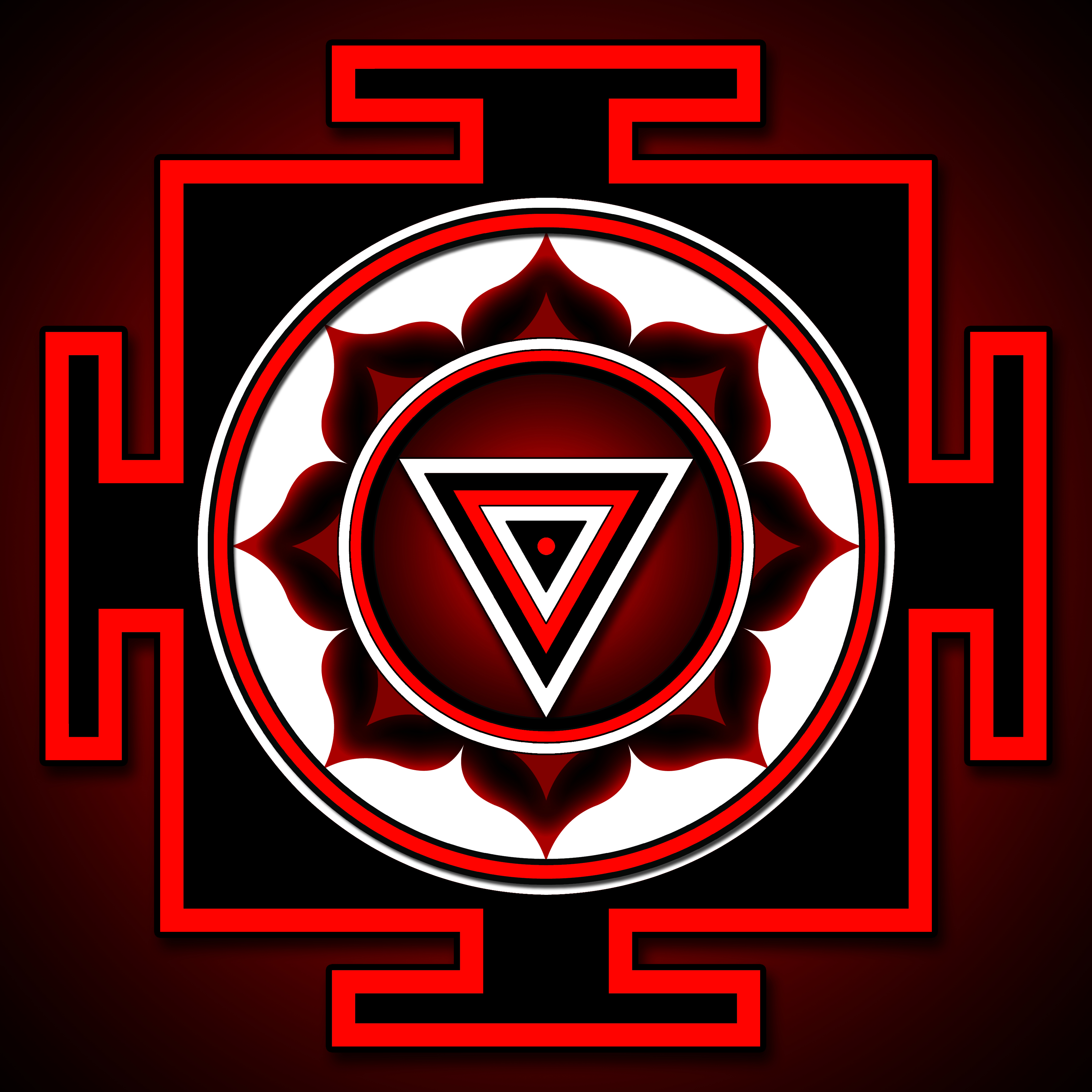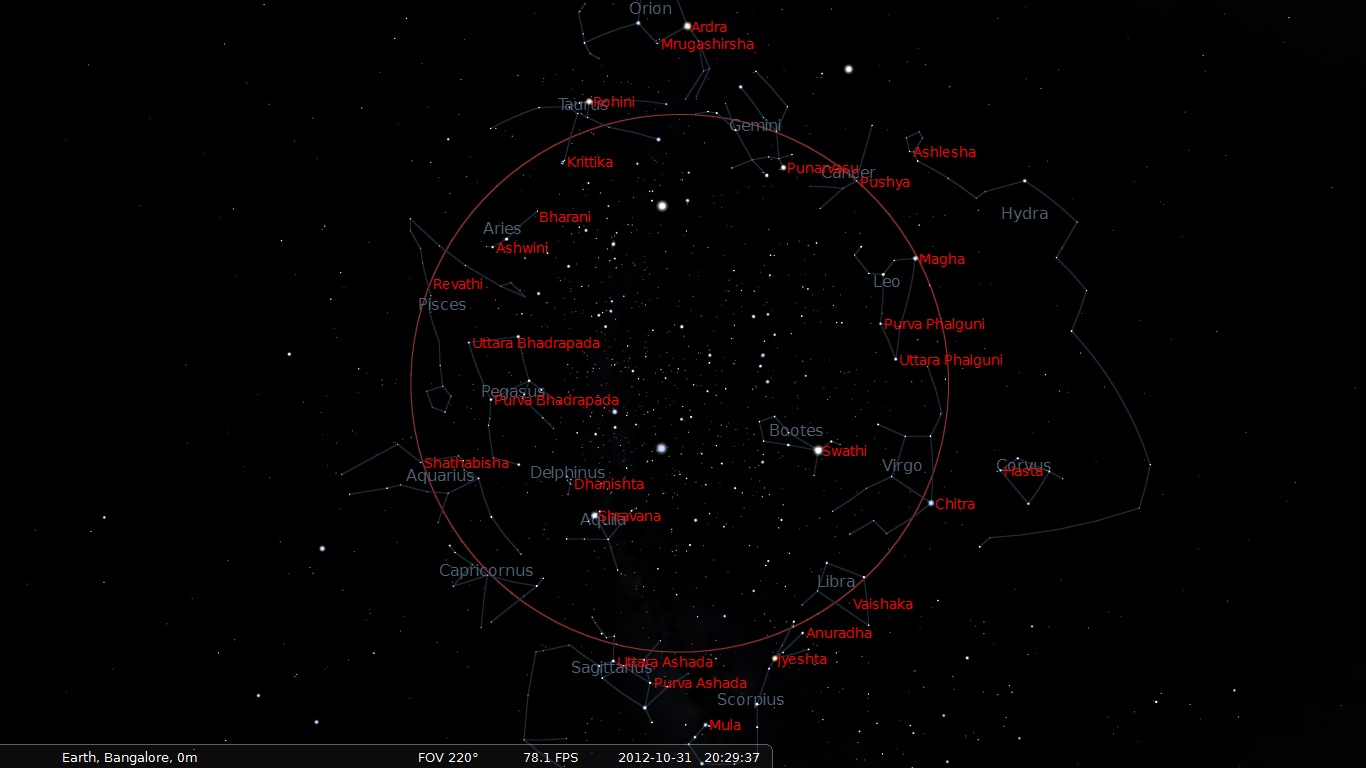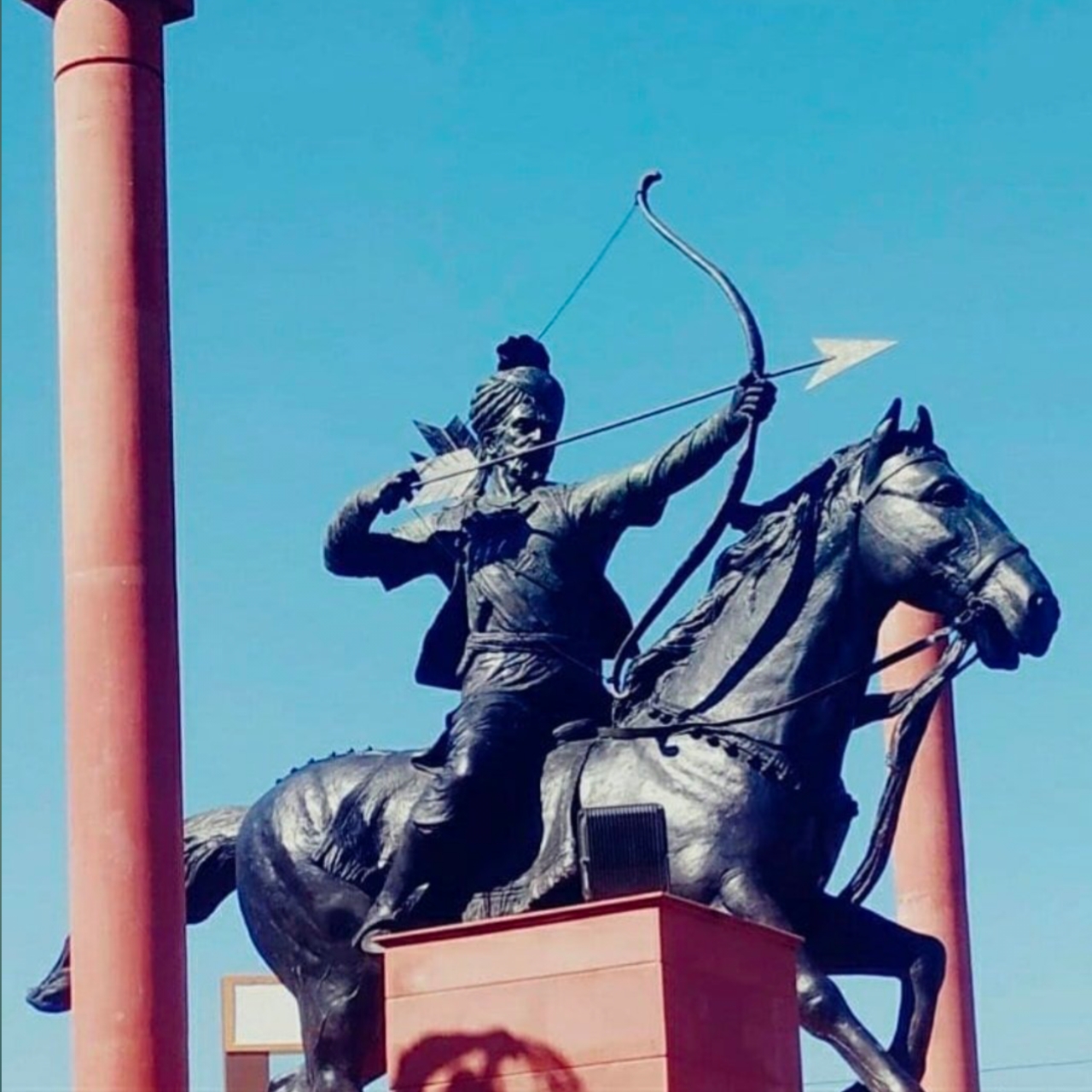|
Kalika Mata Temple, Pavagadh
Mahakali Mata Temple (or Mahakalimata; ) is a Hindu goddess temple complex and pilgrim centre at the summit of Pavagadh Hill in Panchmahal District, India, with in the Champaner-Pavagadh Archaeological Park. Here, She is worshipped in the form of Durga or Chandi. In the temple, the Kali Yantra is worshipped which dates to 10th or 11th century. The temple has three images of goddesses: the central image is of Mahakali Mata, flanked by Kali on the right and Bahucharamata on the left. The idol of Mahakali originally belonged to the Achalgacch of Svetambara sect of Jains that was established on the hill in the 12th century, installing the Mahakali devi as the Adishtayika of the Achalgacch. Pavagadh was an ancient Jain pilgrimage centre. On Chitra sud 8, a fair is held at the temple which is attended by thousands of devotees. The temple is the site of one of the 51 Great holy Shakti Peethas. One can easily reach the temple by ropeway. Geography Kalika Mata Temple is situat ... [...More Info...] [...Related Items...] OR: [Wikipedia] [Google] [Baidu] |
Gujarat
Gujarat () is a States of India, state along the Western India, western coast of India. Its coastline of about is the longest in the country, most of which lies on the Kathiawar peninsula. Gujarat is the List of states and union territories of India by area, fifth-largest Indian state by area, covering some ; and the List of states and union territories of India by population, ninth-most populous state, with a population of 60.4 million in 2011. It is bordered by Rajasthan to the northeast, Dadra and Nagar Haveli and Daman and Diu to the south, Maharashtra to the southeast, Madhya Pradesh to the east, and the Arabian Sea and the Pakistani province of Sindh to the west. Gujarat's capital city is Gandhinagar, while its largest city is Ahmedabad. The Gujarati people, Gujaratis are indigenous to the state and their language, Gujarati language, Gujarati, is the state's official language. The state List of Indus Valley civilisation sites#List of Indus Valley sites discovered, ... [...More Info...] [...Related Items...] OR: [Wikipedia] [Google] [Baidu] |
Nakshatra
Nakshatra () is the term for Lunar mansion in Hindu astrology and Buddhist astrology. A nakshatra is one of 27 (sometimes also 28) sectors along the ecliptic. Their names are related to a prominent star or asterisms in or near the respective sectors. In essence (in Western astronomical terms), a nakshatra simply is a constellation. Every nakshatra is divided into four ''padas'' ( "steps"). The starting point for the nakshatras according to the ''Vedas'' is "Krittika" (it has been argued, because the Pleiades may have started the year at the time the ''Vedas'' were compiled, presumably at the vernal equinox), but, in more recent compilations, the start of the nakshatras list is the point on the ecliptic directly opposite the star Spica, called ''Chitrā'' in Sanskrit. This translates to Ashwinī, a part of the modern constellation of Aries. These compilations, therefore, may have been compiled during the centuries when the sun was passing through Aries at the time of the ver ... [...More Info...] [...Related Items...] OR: [Wikipedia] [Google] [Baidu] |
Sati (goddess)
Sati (, , , ), also known as Dakshayani (Sanskrit: , IAST: ''Dākṣāyaṇī'', lit. 'daughter of Daksha'), is the Hindu goddess of marital felicity and longevity, and is worshipped as an aspect of the mother goddess Adi Parashakti, Shakti. Sati was the first wife of Shiva, the other being Parvati, who was Sati's reincarnation after her death. The earliest mentions of Sati are found in the time of the Ramayana and the Mahabharata, but details of her story appear in the Puranas. Legends describe Sati as the favourite child of Daksha, who marries Shiva against her father's wishes. Later, when Daksha organises a yajna (fire-sacrifice) in which he doesn't invite her and her husband, Sati goes to attend it, only to be humiliated by her father. She then immolates herself to protest against him, and uphold the honour of her husband. In Hinduism, both Sati and Parvati, successively play the role of bringing Shiva away from ascetic isolation into creative participation with the world. S ... [...More Info...] [...Related Items...] OR: [Wikipedia] [Google] [Baidu] |
Adivasi
The Adivasi (also transliterated as Adibasi) are heterogeneous tribal groups across the Indian subcontinent. The term is a recent invention from the 20th century and is now widely used as a self-designation by groups classified as Scheduled Tribes by the Indian government. They are officially recognized as " Scheduled Tribes" in India and as " Ethnic Minorities" in Bangladesh. They comprise 8.6% of India's population and 1.1% of Bangladesh's; or 104.2 million in India, according to the 2011 census, and 2 million in Bangladesh according to the 2010 estimate. Claiming to be among the original inhabitants of the Indian subcontinent, many present-day Adivasi communities formed during the flourishing period of the Indus Valley Civilization or after the decline of the IVC, harboring various degrees of ancestry from ancient Dravidians, Indus Valley Civilization, Indo-Aryan, Austroasiatic and Tibeto-Burman language speakers. Adivasi studies is a new scholarly field, ... [...More Info...] [...Related Items...] OR: [Wikipedia] [Google] [Baidu] |
Koli People
The Koli is an Indian caste that is predominantly found in India, but also in Pakistan and Nepal. Koli is an agriculturist caste of Gujarat but in coastal areas they also work as fishermen along with agriculture. In the beginning of 20th century, the Koli caste was recognised as a denotified tribe under Criminal Tribes Act by the British-Indian Government because of their anti-social activities during World War I. The Koli caste forms the largest caste- cluster in Gujarat and Himachal Pradesh, comprising 24% and 30% of the total population in those states respectively. History Early There has historically been some difficulty in identifying people as Koli or as Bhil people in what is now the state of Gujarat. The two communities co-existed in the hills of that area and even today there is confusion regarding their identity, not helped, in the opinion of sociologist Arvind Shah, by there being "hardly any modern, systematic, anthropological, sociological or historica ... [...More Info...] [...Related Items...] OR: [Wikipedia] [Google] [Baidu] |
Bhil
Bhil or Bheel refer to the various Indigenous peoples, indigenous groups inhabiting western India, including parts of Rajasthan and Madhya Pradesh and are also found in distant places such as Bengal and Tripura. Though they now speak the Bhili language, an Indo-Aryan language, the original aboriginal language that the Bhil originally spoke is lost. Bhils are divided into a number of endogamy, endogamous territorial divisions, which in turn have a number of clans and lineages. Bhils are listed as tribal people in the states of Gujarat, Madhya Pradesh, Chhattisgarh, Maharashtra and Rajasthan—all in the western Deccan regions and central India—as well as in Bengal and Tripura in far-eastern India, on the border with Bangladesh. Many Bhils speak the dominant language of the region they reside in, such as Marathi language, Marathi, Gujarati language, Gujarati or Bengali language, Bengali. Etymology Some scholars suggest that the term Bhil is derived from the word ''billa'' or '' ... [...More Info...] [...Related Items...] OR: [Wikipedia] [Google] [Baidu] |
Kali Yantra
Kali (; , ), also called Kalika, is a major goddess in Hinduism, primarily associated with time, death and destruction. Kali is also connected with transcendental knowledge and is the first of the ten Mahavidyas, a group of goddesses who provide liberating knowledge. Of the numerous Hindu goddesses, Kali is held as the most famous. She is the preeminent deity in the Hindu tantric and the Kalikula worship traditions, and is a central figure in the goddess-centric sects of Hinduism as well as in Shaivism. Kali is chiefly worshipped as the Divine Mother, Mother of the Universe, and Divine feminine energy. The origins of Kali can be traced to the pre-Vedic and Vedic era goddess worship traditions in the Indian subcontinent. Etymologically, the term ''Kali'' refers to one who governs time or is black. The first major appearance of Kali in the Sanskrit literature was in the sixth-century CE text '' Devi Mahatmya''. Kali appears in many stories, with the most popular one bei ... [...More Info...] [...Related Items...] OR: [Wikipedia] [Google] [Baidu] |
Pavagadh Ropeway
Pavagadh ropeway is a ropeway on Pavagadh hill in Pavagadh, Panchmahal district, Gujarat, India. It was opened in 1986. History Pavagadh hill is a major pilgrim site because of presence of the Kalika Mata Temple, a Shakta pitha, as well as tourism site due to the presence of several monuments of Champaner-Pavagadh Archaeological Park, a UNESCO World Heritage Site. Pavagadh ropeway was opened in 1986. The construction and operation is managed by Usha Breco Limited. On 19 January 2003, seven people were killed and 24 were injured in a ropeway accident. Technical features Pavagadh ropeway, in length, is said to be the country's highest then. It operates mono-cable gondola detachable type lifts. A trip takes 6 minutes. It takes passengers above the Pavagadh hill from Manchi Haveli. From there, the passenger has to climb to reach the temple. It has a capacity to carry 1250 passengers per hour but operates at capacity of 400 passengers per hour. It transports 13 lakh passengers an ... [...More Info...] [...Related Items...] OR: [Wikipedia] [Google] [Baidu] |
World Heritage Site
World Heritage Sites are landmarks and areas with legal protection under an treaty, international treaty administered by UNESCO for having cultural, historical, or scientific significance. The sites are judged to contain "cultural and natural heritage around the world considered to be of outstanding value to humanity". To be selected, a World Heritage Site is nominated by its host country and determined by the UNESCO's World Heritage Committee to be a unique landmark which is geographically and historically identifiable, having a special cultural or physical significance, and to be under a sufficient system of legal protection. World Heritage Sites might be ancient ruins or historical structures, buildings, cities, deserts, forests, islands, lakes, monuments, mountains or wilderness areas, and others. A World Heritage Site may signify a remarkable accomplishment of humankind and serve as evidence of humanity's intellectual history on the planet, or it might be a place of grea ... [...More Info...] [...Related Items...] OR: [Wikipedia] [Google] [Baidu] |
UNESCO
The United Nations Educational, Scientific and Cultural Organization (UNESCO ) is a List of specialized agencies of the United Nations, specialized agency of the United Nations (UN) with the aim of promoting world peace and International security, security through international cooperation in education, arts, sciences and culture. It has 194 Member states of UNESCO, member states and 12 associate members, as well as partners in the Non-governmental organization, non-governmental, Intergovernmental organization, intergovernmental and private sector. Headquartered in Paris, France, UNESCO has 53 regional field offices and 199 National Commissions for UNESCO, national commissions. UNESCO was founded in 1945 as the successor to the League of Nations' International Committee on Intellectual Cooperation.English summary). UNESCO's founding mission, which was shaped by the events of World War II, is to advance peace, sustainable development and human rights by facilitating collaboratio ... [...More Info...] [...Related Items...] OR: [Wikipedia] [Google] [Baidu] |
Above Mean Sea Level
Height above mean sea level is a measure of a location's vertical distance (height, elevation or altitude) in reference to a vertical datum based on a historic mean sea level. In geodesy, it is formalized as orthometric height. The zero level varies in different countries due to different reference points and historic measurement periods. Climate change and other forces can cause sea levels and elevations to vary over time. Uses Elevation or altitude above sea level is a standard measurement for: * Geographic locations such as towns, mountains and other landmarks. * The top of buildings and other structures. * Mining infrastructure, particularly underground. * Flying objects such as airplanes or helicopters below a Transition Altitude defined by local regulations. Units and abbreviations Elevation or altitude is generally expressed as "metres above mean sea level" in the metric system, or " feet above mean sea level" in United States customary and imperial units. Com ... [...More Info...] [...Related Items...] OR: [Wikipedia] [Google] [Baidu] |
Halol
Halol is a city and a municipality (tehsil) in Panchmahal district in the Indian state of Gujarat. Located in western India, it has an average elevation of 499 metres (1637 feet). Halol is a major manufacturing hub of Western India, home to manufacturing facilities of numerous domestic and multinational companies like MG Motor India, Siemens Gamesa, JCB India, Hero Motocorp, Sun Pharma, TOTO India, CEAT Tyres, LM Wind Power, Polycab India, etc. Demography India census, Halol city had a population of 61000. Males constituted 53% of the population and females 47%. Halol had an average literacy rate of 72%, higher than the national average of 59.5%: male literacy was 76%, and female literacy was 66%. In Halol, 14% of the population was under 6 years of age. Geography Situated at Latitude = 22° 30′ 0″ N (22.5) and Longitude = 73° 28′ 0″ E (73.46667) There is a large body of water that was built in 1938 to provide the city with a dependable water supply. Ha ... [...More Info...] [...Related Items...] OR: [Wikipedia] [Google] [Baidu] |







